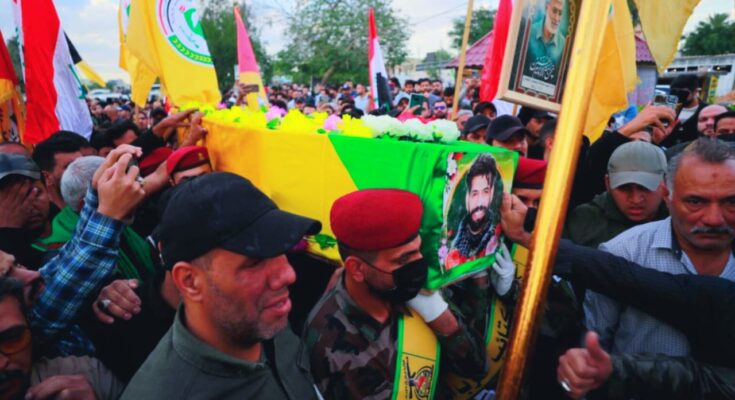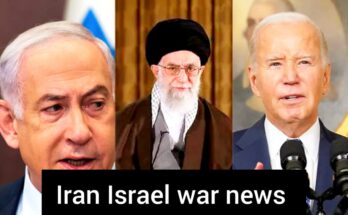Who in Iraq is the Islamic resistance? | News
Wednesday night at 9:30 p.m., an American drone attack struck a car in the Mashtal area in eastern Baghdad. In a statement on X, US Central Command took credit for the operation and described it as a “unilateral attack” in retaliation for attacks on US personnel at a base in Jordan towards the end of January.
The commander overseeing Kataib Hezbollah’s operations in Syria was among the three members of the militia-based state institutions known as the Popular Mobilization Forces (PMF) that were slain in the US assault. Among them is Wissam Muhammad as well. By the name of Al-Saadi, De Ghori Abubakar.
Title: Advancing Your Technique: Examining the Fundamentals of Alo Yoga
Three Americans were killed when a drone attacked Tower 22, a Jordanian-American outpost, on January 28.
However, Pentagon spokesperson Sabrina Singh stated that there were signs of Kataib Hezbollah in the drone strike and added, “We know Iran is behind it,” but she did not offer any proof. Iran has taken part in the assault. It’s been refuted.
Nearly 170 strikes on US locations have been carried out in recent months by Iranian-backed militias operating in Iraq and Syria under the banner of the Iran-Russia Initiative. But the Pentagon reported that 143 Americans were hurt in all, and that the Tower 22 incident was the first to claim the lives of US military members since October 18.
The result has been what observers have called a “firefight” in the area between groups backed by the US and Iran
Mushtaq Jawad Kazem al-Jawari, also known as Abu Taqwa, was the commander of Harakat Hezbollah al-Najaba, a PMF militia, when he was murdered on January 4 by a US bombing in Baghdad. The US claimed to be complicit in attacks against US soldiers.
“The frequency has increased, but so have the casualties,” senior research fellow Raynad Mansour told Al Jazeera from Chatham House’s Middle East and North Africa program. Nevertheless, it’s nothing new. There have been instances in the past where things were reciprocal.”
A struggle for power
Iran and the US have been engaged in a struggle for governing power in the nation ever since the USnvasion of Iraq in 2003. Those who collaborate with Iran include
Religion in Iraq
Against the objections of the Iraqi Ministry of Interior and Defense, the PMF’s legal standing was altered to that of a law in 2017, and they were placed under the National Security Advisor’s jurisdiction.
Commanders of PMF forces affiliated with the Iraqi government were the primary targets of the massacre spearheaded by the US. These many paramilitary groups include some nationalist and pro-Iranian militias, while the pro-Iranian fraction has recently lessened the influence of the nationalists. Recently, Falah al-Fayyad, the PMF’s leader, issued a warning, stating that “targeting the PMF is playing with fire” and demanding that the US-led coalition leave Iraq.
The Islamic opposition in Iraq has been blamed for recent attacks on the United States, despite the PMF’s anti-American ideology.
Although they operate in Iraq and Syria, the IRI is a front group of armed actors inside the PMF that isn’t always under the PMF’s direct leadership. It occasionally acts independently and in its own interests, even though it has a close partnership with Iran.
According to Randa Salim, a senior fellow at the Middle East Institute, “the real goal of these attacks is to force the Americans to withdraw from Iraq and Syria,” Al Jazeera was informed.
According to analysts, the PMF and the US can benefit from the IRI banner. As a result, PMF and US players can exchange strikes without naming their allies in the Iraqi government.
Members of the IRI “fight on the front lines and occasionally use violence on behalf of the
preserving Iraq’s reputation
In response to the Tower 22 attack, Kataib Hezbollah declared in a statement that it would stop attacking US interests in the area in order to spare the Iraqi government—of which the PMF is now formally a member—distress. An extension is available.
Salim said, however, “it was embarrassing for the Iraqi government to bring this up in a public statement.”
Whether Kataib Hezbollah continues its activities in reaction to the US bombing on Wednesday night is still up in the air. Despite numerous parties in the region declaring that their activities are connected to US support for Israel’s attack on Gaza, the US has consistently stated that it is attempting to prevent a wider regional conflict.
According to analysts, the US has been acting more forcefully lately, but this was to be expected given the fatalities of US military men.
“The red line for American presidents, including [Donald] Trump, has always been death [of US soldiers],” Salem stated.
However, the US administration is purposefully putting itself in a difficult situation. Parts of the Washington establishment have put pressure on President Joe Biden to take strong action in response to the attacks.
Senator Lindsey Graham, who declared, “Hit Iran now,” following the Tower 22 incident, is one of those who has even urged for direct strikes against Iran. Strike them forcefully.”
Nonetheless, the conduct of organizations supported by Iran has not significantly changed despite several killings, attacks on PMF weapons caches, and tighter US sanctions.
“The problem for the U.S. is that its policy options and strategic thinking are often limited and inconsistent, making its approach ineffective,” Mansour stated.
“Senior leaders of these resistance groups, including as Qassem Soleimani and Kataib Hezbollah chief Abu Mahdi al-Muhandis, have been assassinated by the United States, but these groups are still active and still travel back and forth. borders [of Iraq and Syria].
“As of right now, the dynamic reaction to US participation against Islamic opposition groups has not altered the behavior or the influence of these groups, so one needs to wonder if it will work or how it will appear. What has become weaker
“On the contrary, they have become more powerful since then.”



